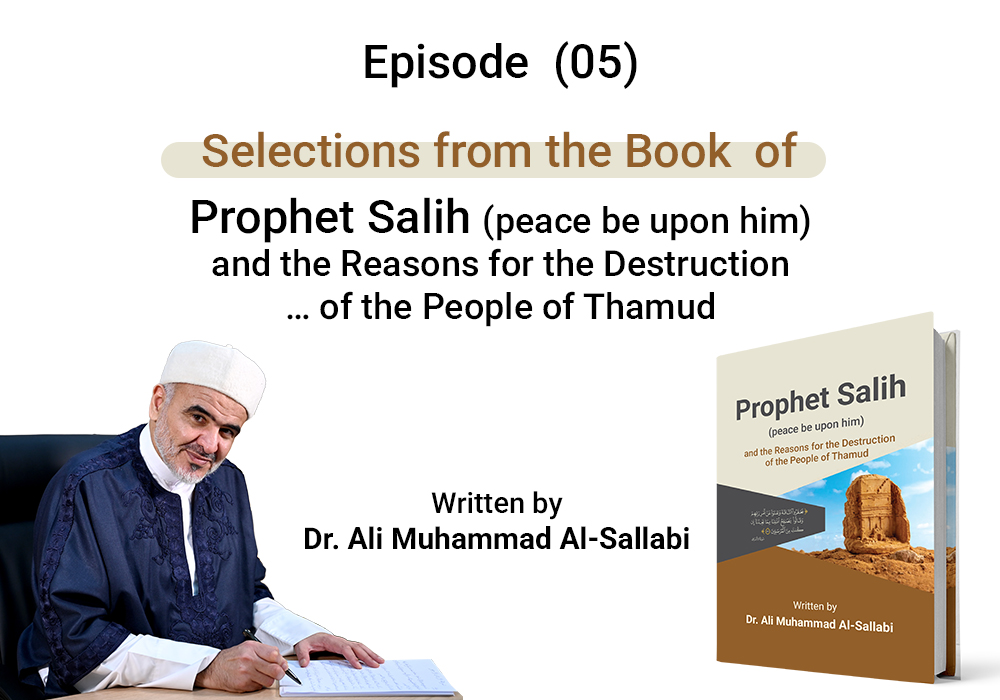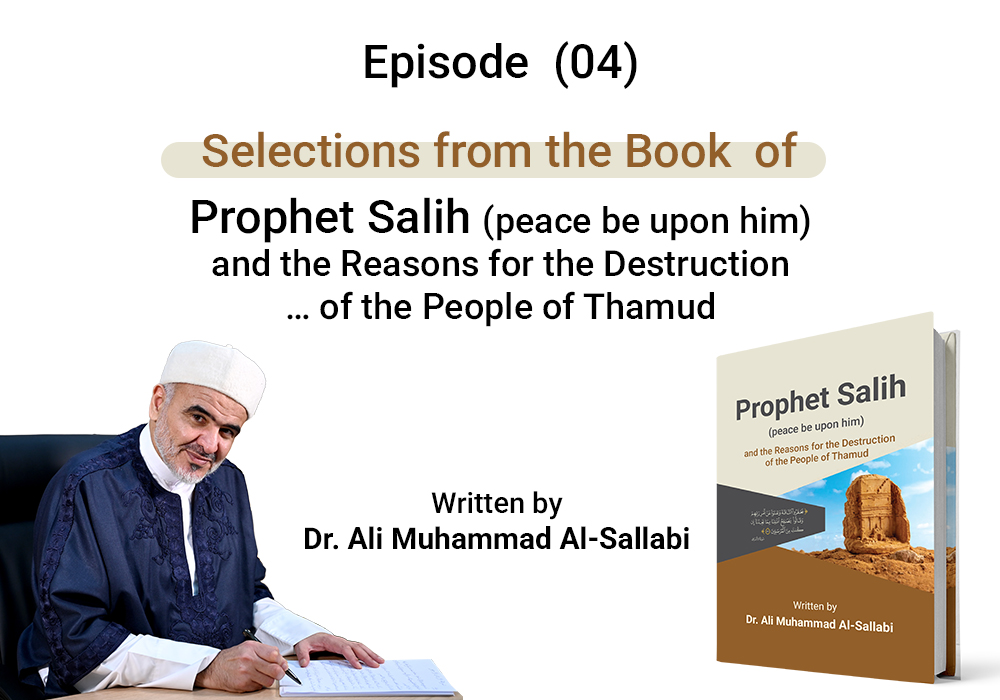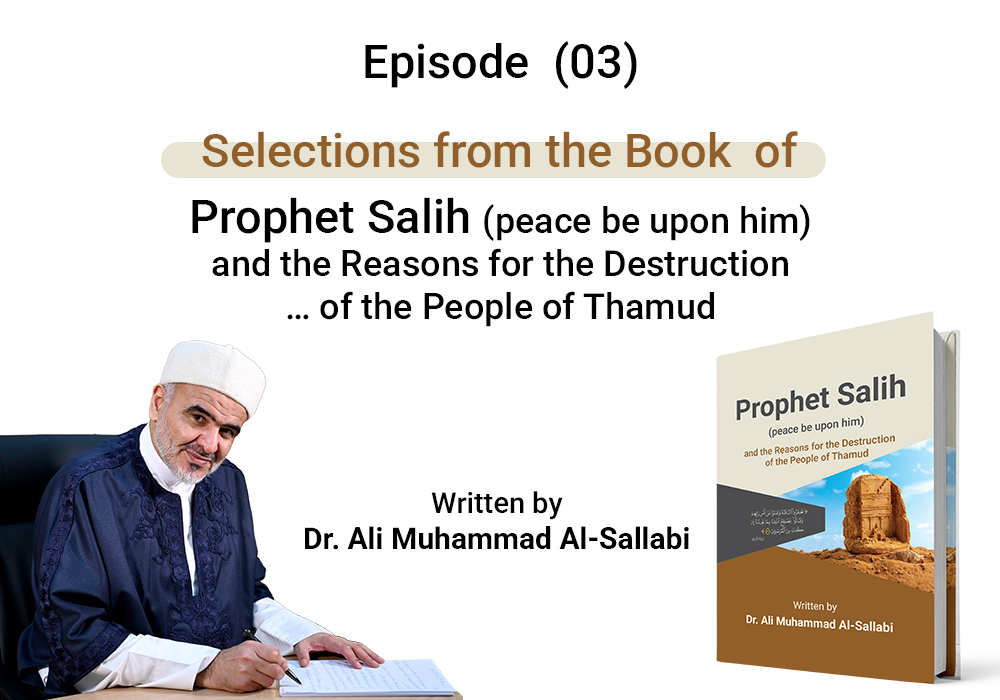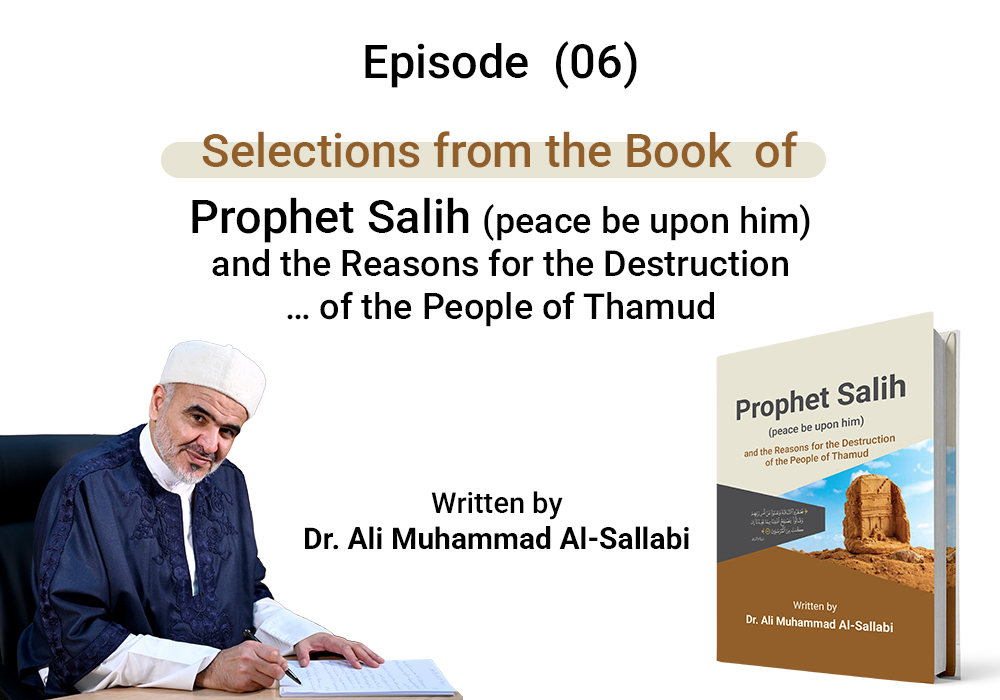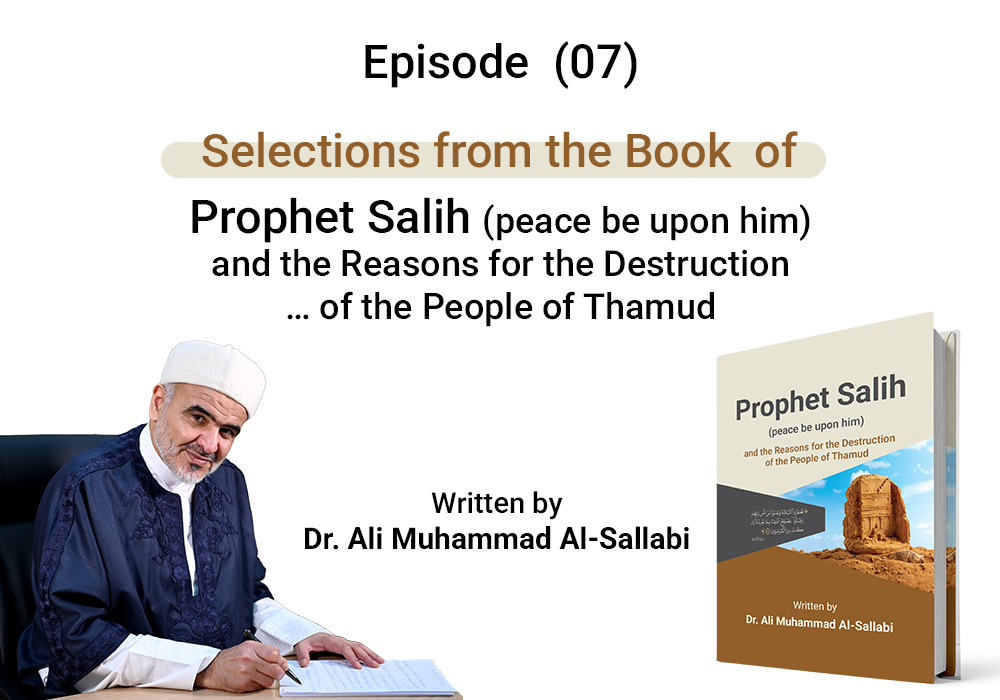The Thamudic society
Selections from the Book Prophet Salih (peace be upon him) and the Reasons for the Destruction of the People of Thamud …
Written by Dr. Ali Muhammad al-Sallabi...
Episode (05)
Thamudic writings indicate that most of their people possessed a certain level of literacy. One woman was named Sahf, meaning "one who makes mistakes while reading." There is also an inscription showing that a young girl carved her name into a rock while her father watched closely. Additionally, some individuals practiced writing as a profession, as evidenced by the name Katb (meaning "scribe").
The Thamudic people were primarily farmers, leaning more towards a settled lifestyle than a nomadic one. They had permanent settlements, temples, and some engaged in trade. Hunting was also a significant activity, particularly among the Thamudic inhabitants of Midian. Three rock drawings have been found in the inland mountains depicting ships used for fishing. Interestingly, similar ship carvings have been discovered on rocks in Wadi Hammamat in Egypt’s Eastern Desert, alongside Thamudic inscriptions. This suggests that the Thamudic people may have used these boats to cross the Red Sea.
However, this does not exclude the possibility that some members of Thamudic society were nomadic Bedouins. Some were involved in caravan trade and were referred to in inscriptions as Ahl al-‘Ir (people of the caravans). Thamudic inscriptions depict men who appear to have elongated heads, similar to other inhabitants of northern Arabia. Their hair was generally short, and they wore waistcloths with belts. Their heads were usually uncovered, although some men wore straw head coverings. Others wore robes with turbans, and some had tunics reaching their knees.
As for the women, they had long hair, and some depictions show them carrying baskets on their heads while wearing long dresses down to their ankles, along with veils. The images suggest that Thamudic women were particularly fond of jewelry, including bracelets and necklaces, often shaped like crescents or scarabs. A woman who did not wear jewelry around her neck was called Atal. Additionally, the use of oils and perfumes was common among them.
The study of inscriptions carved into rocks and buried under the sands, attributed to the Thamudic people, has been dated by archaeologists to the eighth century BCE, continuing until the mid-fifth century CE—approximately a century before the birth of the Prophet Muhammad (peace and blessings be upon him). This means that the Thamudic people existed on the stage of history for thirteen centuries.
It is said that the destruction of the Thamud occurred around nineteen centuries before Christ, and that their prophet lived approximately between 2000 and 1900 BCE. The period between the destruction of the ‘Aad and the Thamud was about five hundred years.
The Thamud perished before the time of Moses (peace be upon him), just like the people of ‘Aad. This is indicated in the words of the believer from Pharaoh’s people, as mentioned in the Holy Quran: {And he who believed said, "O my people, indeed I fear for you [a fate] like the day of the companies – (30) Like the custom of the people of Noah and of ʿAad and Thamud and those after them. And Allah wants no injustice for [His] servants. (31)} [Ghafir: 30-31].
This righteous believer warned his people—the people of Pharaoh—of Allah's punishment in both this world and the Hereafter. He told them that if they rejected Moses (peace be upon him), they might suffer the same fate as the past nations who denied their prophets and rejected their messengers, such as the people of Noah, ‘Aad, Thamud, and others like the people of Lot. The wrath of Allah befell them, and they found no helper to aid them or protector to save them. Their destruction was the result of their sins, denial of the truth, and rejection of their messengers, for Allah does not wrong His servants.
- Ali Muhammad al-Sallabi, Prophet Salih (peace be upon him) and the Reasons for the Destruction of the People of Thamud, pp. 36-39.
- Historical studies from the Holy Quran (1/283).
- Islamic Doctrine and Its Foundations, Abdul Rahman Habanka, Dar Al-Qalam, 2021 AD, p. 519.
- Prophets in the Quran who left traces, Hoda Hassan, Dar Al-Ma’rifah for Printing and Publishing, 2006, p. 83.
For further information and review of the sources for the article, see:
The Book of Prophet Salih (peace be upon him) and the Reasons for the Destruction of the People of Thamud on the official website of Sheikh Dr. Ali Muhammad al-Sallabi:


